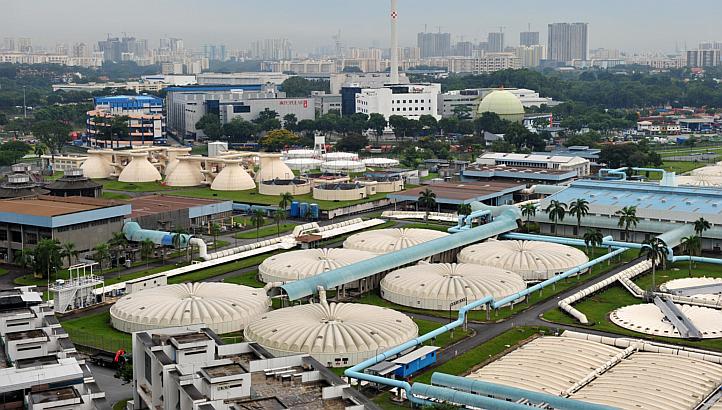News
The amount of food waste being generated in Singapore has increased by a significant amount. According to the National Environment Agency (NEA), 788,600 tonnes of food waste was generated last year, equivalent to about 2 bowls of rice per person per day. Out of this, only 101,400 tonnes (13 per cent) was recycled. The amount of food waste generated in Singapore has increased by about 48 per cent over the past 10 years and is expected to rise further.
Dealing with Singapore’s food waste issue
Besides working on cutting down food waste, one solution to addressing this issue is by turning food waste into energy. On the 17th of June, the Public Utilities Board (PUB) and SEAS member company Anaergia Pte Ltd (Anaergia) launched Singapore’s first co-digestion facility to treat used water sludge from water reclamation plants together with source-segregated food waste to produce biogas.
Construction of the co-digestion demonstration facility at the Ulu Pandan Water Reclamation Plant will be completed by September 2015. It will be able to treat up to 40 tons of combined food waste and used water sludge using the OmnivoreTM process patented by Anaergia, to produce renewable biogas from the process of anaerobic digestion. The biogas is subsequently converted to electricity to supplement energy consumption of the plant. PUB currently already turns water sludge into biogas and electricity, but when combined with food waste, a higher yield of biogas can be produced because of the higher calorific value of food waste. It is estimated that together with food waste, the amount of electricity generated will be able to meet half of the plant's energy needs. Currently, used water treatment plants in Singapore generate 20 to 25 per cent of their energy from biogas obtained from sludge alone. Harry Seah, Chief Technology Officer, PUB, said in a joint press release with Anaergia that “This could potentially allow the used water treatment plant to achieve energy self-sufficiency, which is using only as much energy as the treatment process itself generates.” Water treatment is a crucial process to Singapore, thus having plants that are energy self-sufficient in order to conduct this process is a step towards having more sustainable energy sources.
How it works
 A media factsheet released by PUB and Anaergia explains that the co-digestion plant will have the capacity to treat up to 40 tons of combined sludge and food waste daily – roughly the weight of 30 mid-sized sedan cars, and will demonstrate that existing municipal used water treatment plants with anaerobic digesters can be utilized for the co-digestion of food waste and sludge. The co-digestion of food waste and sludge would also separate the food waste from the other dry recyclable waste, enabling more waste to be recycled, which also addresses another waste related issue being faced by Singapore – increasing the recycling rates of our waste.
A media factsheet released by PUB and Anaergia explains that the co-digestion plant will have the capacity to treat up to 40 tons of combined sludge and food waste daily – roughly the weight of 30 mid-sized sedan cars, and will demonstrate that existing municipal used water treatment plants with anaerobic digesters can be utilized for the co-digestion of food waste and sludge. The co-digestion of food waste and sludge would also separate the food waste from the other dry recyclable waste, enabling more waste to be recycled, which also addresses another waste related issue being faced by Singapore – increasing the recycling rates of our waste.
The food waste used in this demonstration facility at Ulu Pandan Water Reclamation Plant will use source-segregated food waste collected from camps, educational institutions and hospitals in Clementi, as the Ulu Pandan Water Reclamation Plant is located nearby. If successful, the process could potentially be implemented at the future Tuas Water Reclamation Plant and NEA’s Integrated Waste Management Facility. SEAS would like to congratulate Anaergia on the launch of this demonstration facility.
Growth potential for renewable energy in Singapore
The success of this demonstration could also lead to a greater project scope for biogas as a renewable energy source in Singapore. This project combines food waste and sludge, but food waste alone can also generate biogas. Perhaps this can lead to projects that generate biogas solely from food waste. The technology for generation of biogas from food waste alone is present and already commercially viable, but there are barriers to the adoption of biogas as described in the SEAS White Paper on Accelerating Renewable Energy. NEA has implemented a policy of restricting wood and horticultural waste disposal to the public incinerator, but sufficient amounts of pure homogeneous food waste are still difficult to obtain. However, this demonstration facility is a good start, and can help address Singapore’s issue of rising food waste and it can show the growth potential for renewable energy in Singapore.
*image credit: ST File